It’s easy to see why Japan is at the top of many travel bucket lists, with its ancient temples, neon-lit cities, breathtaking natural beauty, and fantastic food. Deciding when is the best time to visit Japan is tricky as the climate varies greatly between cities and across its islands.
Whether you dream of witnessing the pretty pink cherry blossoms in bloom or chasing fiery autumn foliage, let’s uncover the perfect time for your Japan adventure. This guide will help you navigate the seasons, uncovering the magic of Japan throughout the year. The best time to visit Japan can be quite individual, so we’ll go beyond the seasons, looking at the busiest periods and special festivals too.
What is the best month to go to Japan?


Choosing the best time to visit Japan isn’t easy. It’s a brilliant, rich, and varied country where the best month depends on the group visit.
Ski enthusiasts will chase the fresh pow of Hokkaido during February. Others will be enchanted by the spring blooms, with fairytale cherry blossom trees the most vibrant in late March or early April. Those blossoms are wrapped up in local festivities, which bring huge crowds too. For that reason, nature lovers and keen photographers might prefer the beauty of autumn’s fiery foliage, which ripples across Japan from late September to November.
Ultimately, the best month to visit Japan hinges on your travel desires. You can visit for the culture, the snow, the seasonal blooms, or to avoid the crowds.
RELATED BLOG: Japan in March: weather, reasons to visit and things to do
Japan during cherry blossom season: March & April
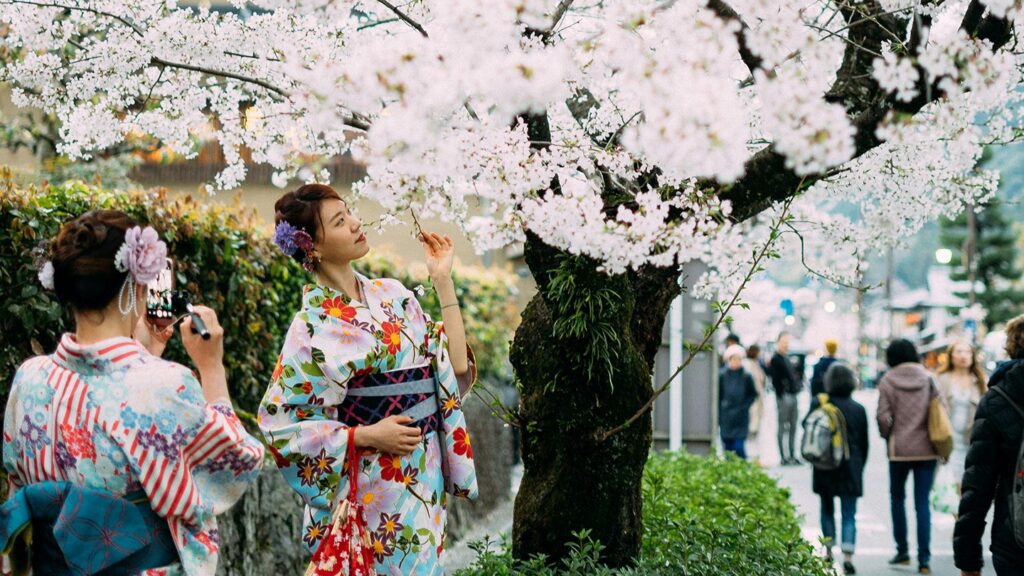

It’s tricky to plan a holiday around Japan’s cherry blossom season, but usually the pink blooms cascade across the country between late Mach and early April. It’s an exciting time in Japan, as delicate sakura paint the landscapes in shades of pale pink and white. This time of year holds immense cultural significance in Japan, with the fleeting beauty of the blossoms reflecting the temporary nature of life.
Just like a weather forecast, there are blossom forecasts available, with suggested bloom dates for different cities that get updated in the weeks ahead. The climates in Tokyo, Osaka, Kyoto and Sapporo are all very different, so the blooms arrive at different times. It can be hard to predict far in advance, so if you extend your stay in Japan after your tour, you could take a more spontaneous bullet train to where the best blooms are that week.
Sakura season isn’t for tourists. This is a local celebration, so you might be invited to join hanami (flower viewing) picnics under the blossoms, or stroll along picturesque avenues lined with these delicate flowers.
RELATED BLOG: 9 of the best places to see cherry blossoms in Japan
Winter months in Japan
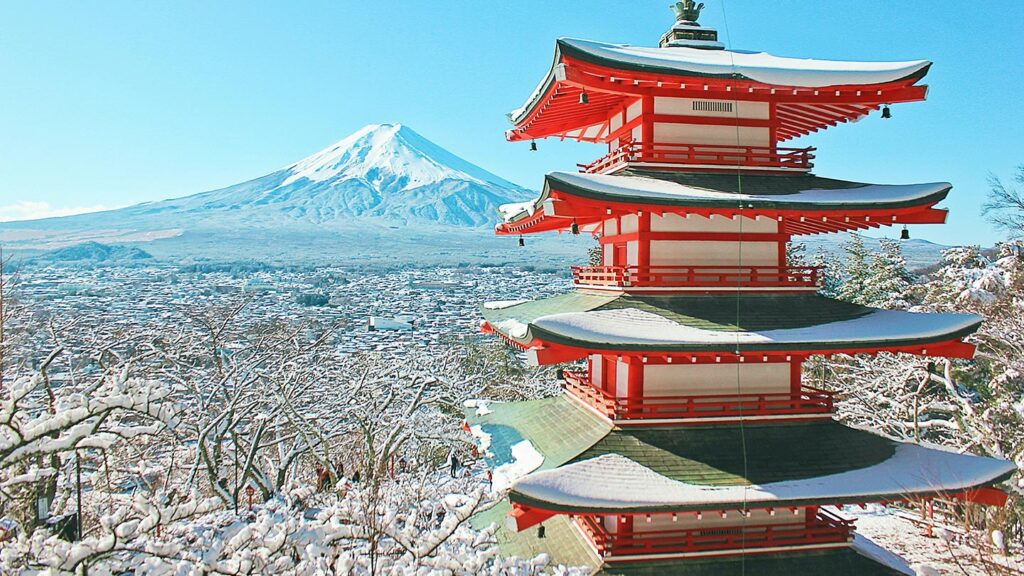

Winter attracts a certain crowd to Japan. Powder hounds flock to Hokkaido, the northernmost island, where legendary “Japow” blankets the slopes from December to April. Here you’ll find fresh tracks, fluffy light snow, and stunning mountain scenery.
If snow sports isn’t your thing, the cities are the place to be. Most parts of Japan are quieter between January and March, so it’s a great time to explore the most touristic sights without the crowds. Bring a big jacket and be prepared for a dusting of snow around Kyoto’s serene temples. There’s always an onsen and steaming bowl of ramen to warm you up!
If you venture to the south, Okinawa is more of a subtropical paradise, with balmy winter temperatures and turquoise waters. Some days are warm enough for t-shirt weather, which is a huge contrast to the north.
VISIT JAPAN: Splendours of Japan
Fall foliage in Japan
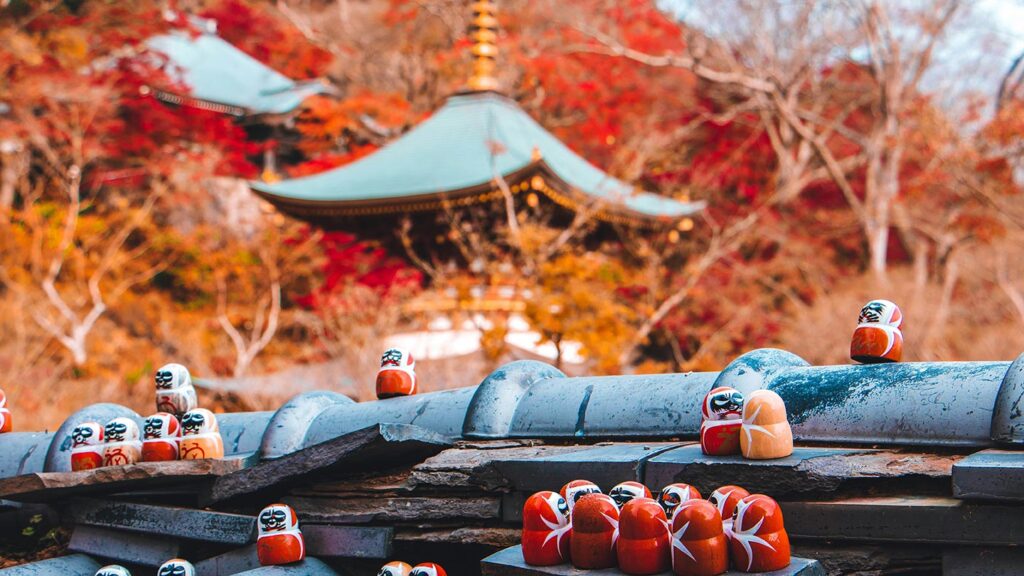

Momijigari is the name for Japan’s autumn season, and depending on the location, you can peep changing leaves from late September to November. Across Japan you can expect a ripple of leaves in hues of red, orange, and yellow. Beyond being a big tourist drawcard for both domestic and international travelers, this season holds cultural significance too. The leaves represent the traditional Japanese aesthetic – known as wabi-sabi. This idea is focused on the acceptance of transience and imperfection.
Kyoto, one of Japan’s unmissable traditional cities, is said to have fall foliage peak around the middle of November, but the fun is all over by the end of the month. One of the best ways to appreciate fall foliage while in Japan is by visiting the forests and temples, which are often framed by crimson maples and other beautiful deciduous trees.
RELATED BLOG: The 14 most useful travel tips and phrases to know before visiting Japan
Hot and humid summers in Japan


Images of snow-capped Mt Fuji and autumnal foliage might make Japan seem like it has a mild climate, but come summer things heat up. In Tokyo you’ll find temperatures above 30°C (86°F) in summer, and then you need to consider the addition of high humidity. Japan’s rainy season falls from early June to mid-July, so that can dampen your holiday (quite literally).
Of course, Japan is a long country with mountain areas, so there are cooler parts to the country and summer is a popular time to visit Japan for hiking, plus there are tons of summer festivals.
RELATED BLOG: The Most Amazing Summer Festivals in Japan
How many days in Japan is ideal?
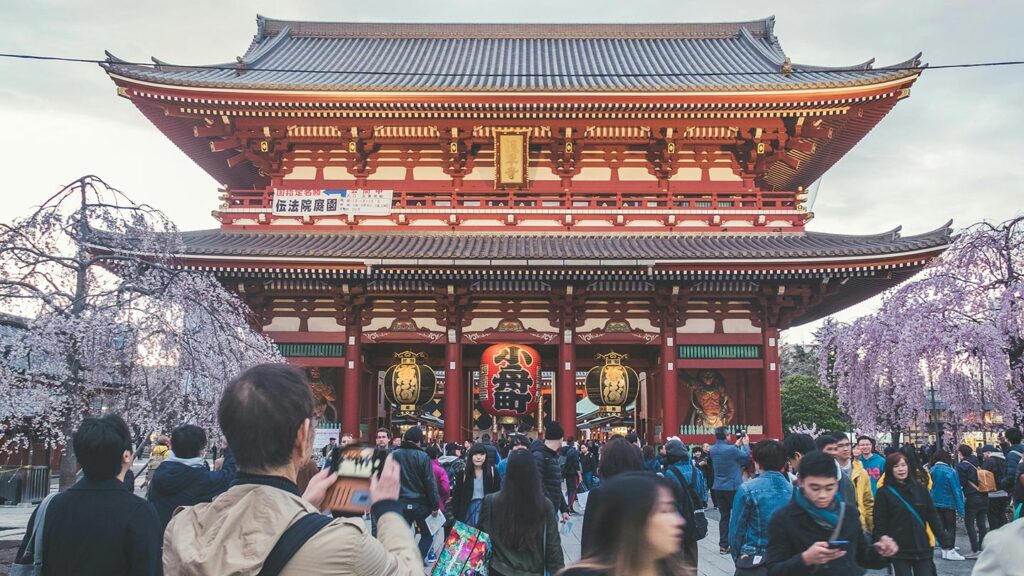

The more days in Japan, the better! Of course, any trip depends on your travel style, interests, and available time. A whirlwind tour can hit the major highlights including Tokyo, Kyoto, and Osaka, and between a week and 11 days will give you a good taste of each location. Trafalgar’s 11-day Classic Japan trip is the perfect length, and even squeezes in a side trip to Hiroshima. The itinerary is all by bullet train too!
For a deeper dive, two weeks will give you a truly immersive experience of Japan. Trafalgar’s 13-day Splendours of Japan trip gives a more rounded taster of the country, traveling by road and rail. You’ll see all the big cities, along with smaller towns and off-the-beaten path destinations.
If you have even more time, with three weeks or a month, you could add side trips to the Japanese Alps or subtropical Okinawa.
VISIT JAPAN: Classic Japan
RELATED BLOG: 7 essentials every Japan packing list needs to include
What is the cheapest time to go to Japan?
If you’re on a budget, timing is everything in Japan. While the allure of cherry blossoms or autumn foliage are strong, these peak seasons mean prices are higher for accommodation, travel etc.
The cheapest time of year to travel is during the winter months. Generally, from mid-January to mid-March the crowds dwindle so travel to Japan is cheaper. If that sounds too cool, consider the shoulder seasons when you can find good deals – this would be from late May to early June, and from late November to early December.
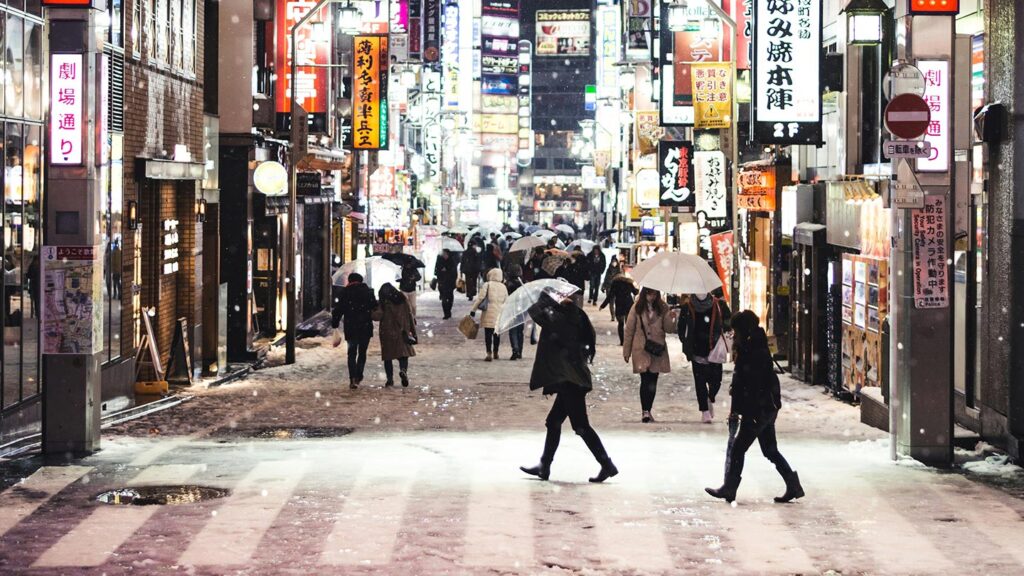

What is the least touristy month in Japan?
Japan without the crowds? February. If you had to choose just one month as the quietest, February falls between the festive season and cherry blossoms, and during this period tourist numbers are low and you’re still guaranteed a good time.
That gives you more space to enjoy the most popular tourist destinations, and you may gain better travel deals. There’s also a national holidays – The Emperor’s Birthday – on February 23, which means the Imperial Palace may be open to the public along with celebrations.
What is Golden Week and why avoid this period in Japan?
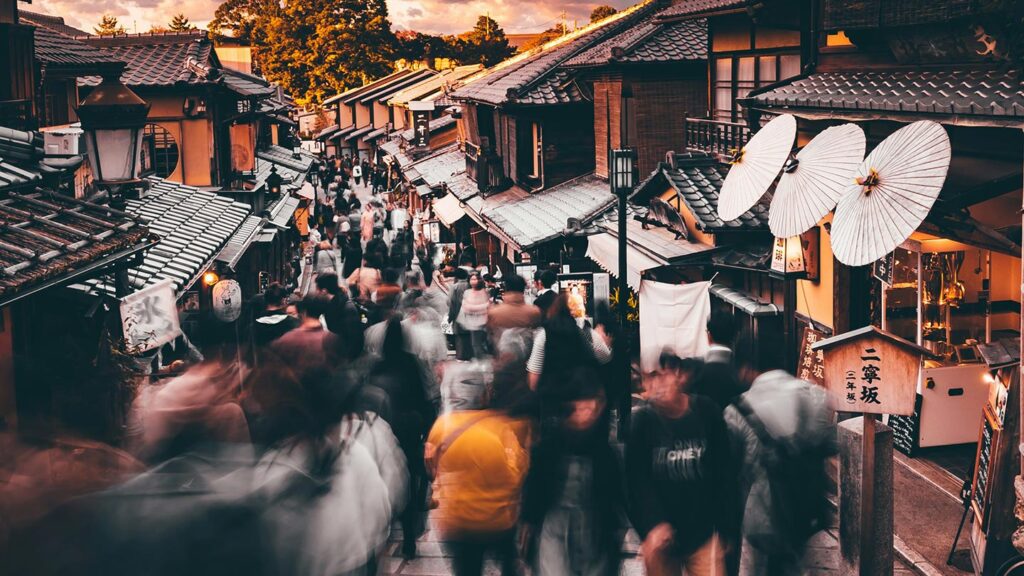

Golden Week is a cascade of four national holidays that all fall within one week. As you can imagine, this is a busy time as domestic travelers take vacations, and visit family and friends. Japanese locals love to travel locally this week, so tourist sites are packed, accommodation skyrockets, and roads get blocked.
The holidays are: Showa Day (April 29th), Constitution Day (May 3rd), Green Day (May 4th), and Children’s Day (May 5th).
When is the best time to visit Japan in your eyes? Let us know in the comments…